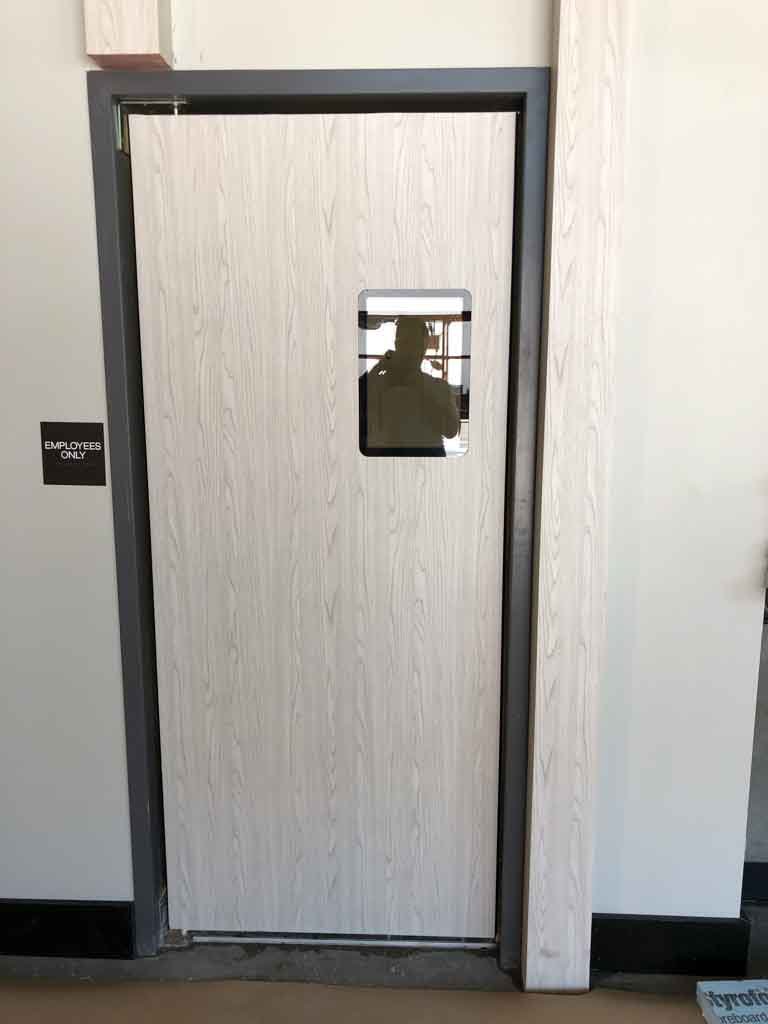Transforming Your Commercial Door: Wrapping a Door with a Window Using Architectural Film
Architectural film has become a game-changer in the world of interior design and home improvement. It offers endless possibilities for transforming various surfaces, and one of the most innovative uses is wrapping a door with a window using architectural film. This creative project allows you to add style, and even functionality to your working space, all without the need for a major renovation. In this blog, we'll guide you through the process of wrapping a door with a window using architectural film, providing you with the inspiration and information you need to embark on this exciting DIY project.
Materials and Tools
Before diving into the project, gather the materials and tools you'll need:
Architectural Film: Choose a high-quality architectural film that suits your style and needs. There are various designs and textures available, including frosted, stained glass, and decorative patterns.
Utility Knife and Blades: You'll need these for precise cutting of the film.
Squeegee: A squeegee helps remove air bubbles and ensures smooth application.
Measuring Tape: Measure the dimensions of the window and door to cut the film accurately.
Cleaning Supplies: Make sure the door and window are clean and free of dust and debris before applying the film.
Step-by-Step Guide
Now, let's walk through the process of wrapping a door with a window using architectural film:
Measure and Cut:
Measure the dimensions of the window on the door.
Cut the architectural film, leaving a 1-2 inch overlap on all sides. This extra margin will allow you to make precise adjustments during installation.
Prepare the Surface:
Clean the door and window to remove any dirt or residue.
Ensure the surface is completely dry before proceeding.
Wet the Surface:
Spray the door and window with the 70% Isopropyl Alcohol and water, creating a slippery surface for easier application.
Apply the Film:
Carefully peel the backing off the architectural film.
Position the film over the window on the door, leaving the excess film overlapping the edges.
Use the squeegee to smooth out the film, starting from the center and moving outward to remove any air bubbles and ensure a snug fit.
Trim the Excess:
Use the utility knife to trim away the excess film along the edges. Be cautious and precise to create clean lines.
Final Adjustments:
Go over the entire surface with the squeegee to eliminate any remaining air bubbles or wrinkles.
Benefits of Wrapping a Door with Architectural Film
Improved Aesthetics: Transform the look of your door by adding decorative wood patterns.
Cost-Effective: Wrapping a door with architectural film is a budget-friendly alternative to replacing or customizing doors and windows.
Easy Maintenance: The film is easy to clean and resistant to wear and tear.
Conclusion
Wrapping a door with a window using architectural film is a fantastic DIY project that can enhance the aesthetics and functionality of your living space. By following our step-by-step guide and choosing the right architectural film for your needs, you can achieve a stunning transformation without the hassle and expense of a major renovation. Whether you want to add a touch of elegance, improve privacy, or simply change the look of your door, architectural film offers a versatile and cost-effective solution that you can enjoy for years to come.
If you want to hire RM wraps contact us at 208-696-1180 or info@rmwraps.com
Watch this video on how Randy installed the Architectural film on this door.
How to wrap a Door using 3M Di-Noc Architectural films







